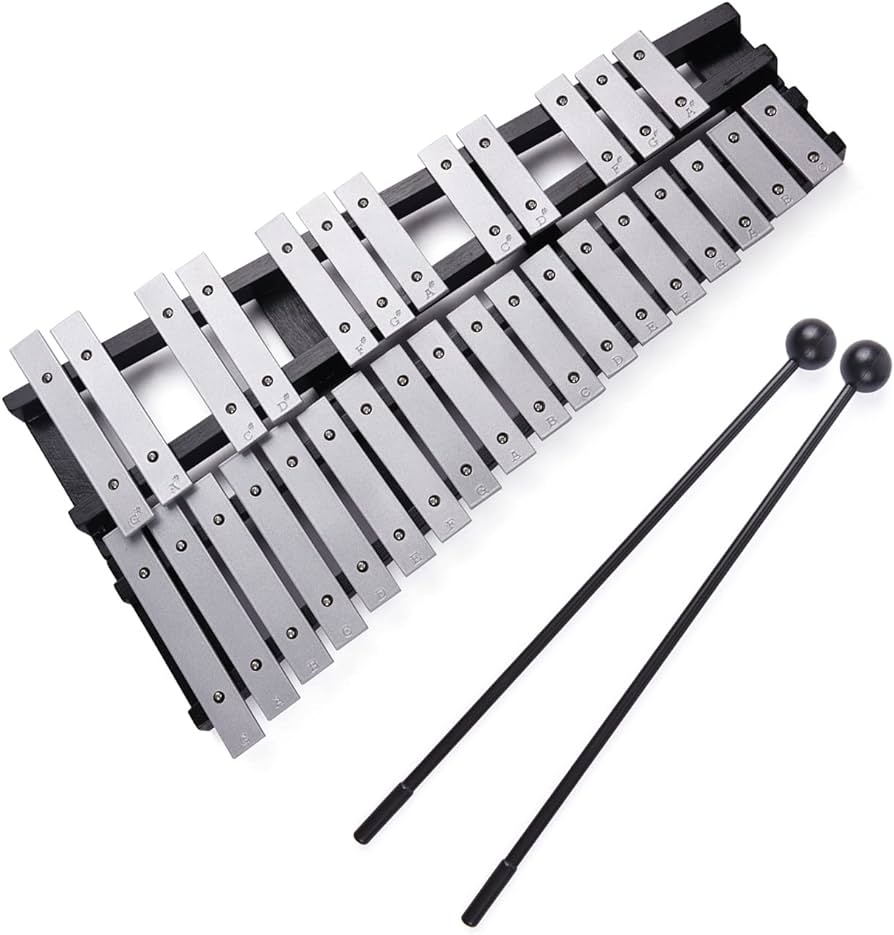The glockenspiel, with its shimmering tones and captivating melodies, has carved out a unique place in the realm of musical instruments. Derived from the German words “glocken” (bells) and “spiel” (play), this percussion instrument has a rich history and a versatile presence in various musical genres. In this comprehensive exploration, we delve into the origins, construction, playing techniques, repertoire, and cultural significance of the glockenspiel.
Origins and History
The roots of the glockenspiel can be traced back to ancient civilizations such as China and Persia, where early forms of bell instruments were utilized for ceremonial and religious purposes. However, it was in Europe, particularly in Germany, where the modern glockenspiel began to take shape during the Middle Ages. Initially crafted with iron bars, the instrument evolved over centuries, eventually adopting the characteristic metal bars and resonating chambers that define its sound today.
One of the defining moments in the history of the glockenspiel was its integration into military music during the 18th and 19th centuries. Glockenspiels were commonly used in military bands to add brightness and clarity to marches and ceremonial music. This association with military music helped popularize the instrument across Europe and beyond.
Construction and Components
A typical glockenspiel consists of a set of metal bars arranged in a chromatic scale, mounted on a frame. The bars are usually made of steel or a similar alloy, carefully tuned to produce specific pitches when struck with mallets. Beneath each bar, there is a resonating chamber that amplifies and sustains the sound. The size and thickness of the bars determine the pitch and timbre of each note.
Modern glockenspiels may also feature additional components such as damper mechanisms, allowing for more precise control over the sustain of each note. Some glockenspiels are equipped with a pedal mechanism that enables the player to raise or lower the pitch of certain bars, expanding the instrument’s tonal range.
Playing Techniques
Playing the glockenspiel requires precision, control, and a keen sense of musicality. The performer typically uses a pair of specialized mallets, usually made of wood or synthetic materials, to strike the bars. Different playing techniques can produce a variety of effects, including staccato, legato, tremolo, and glissando.
One of the fundamental aspects of glockenspiel technique is achieving consistent tone production across all the bars. This requires careful attention to the angle, velocity, and placement of the mallets. Additionally, performers must develop a nuanced touch to control the dynamics and expression of their playing.
Repertoire and Musical Styles
The glockenspiel’s bright and penetrating sound makes it well-suited to a wide range of musical genres and styles. In classical music, composers have incorporated the glockenspiel into orchestral works, chamber music, and solo repertoire. From Tchaikovsky’s “The Nutcracker” to Prokofiev’s “Peter and the Wolf,” the glockenspiel has played a significant role in some of the most beloved classical compositions.
In addition to classical music, the glockenspiel has found its way into jazz, pop, rock, and contemporary music. Its distinctive timbre adds a touch of brilliance and sparkle to arrangements, making it a popular choice for composers and arrangers seeking to enhance their sonic palette.
Cultural Significance and Iconic Performances
Beyond its musical applications, the glockenspiel holds cultural significance in various traditions and celebrations around the world. In Germany, for example, the glockenspiel is a prominent feature of Oktoberfest celebrations, where it is often heard in traditional folk music and parades. Similarly, in East Asian cultures, glockenspiels are used in festive rituals and ceremonies to symbolize joy and auspiciousness.
The instrument has also left its mark on popular culture through iconic performances and recordings. From the catchy glockenspiel riff in The Beatles’ “Lucy in the Sky with Diamonds” to the haunting melodies of Mike Oldfield’s “Tubular Bells,” the instrument has made memorable appearances in numerous songs and soundtracks.
Innovations and Contemporary Developments
In recent years, advancements in materials and technology have led to innovations in glockenspiel design and manufacturing. Modern glockenspiels may incorporate lightweight materials, ergonomic features, and electronic enhancements to improve playability and versatility. Some models even offer MIDI compatibility, allowing performers to integrate the instrument seamlessly into electronic music setups.
Furthermore, contemporary composers and performers continue to explore new possibilities for the glockenspiel, pushing the boundaries of its traditional role and expanding its sonic capabilities. Experimental techniques, extended playing techniques, and interdisciplinary collaborations are all contributing to the evolution of the instrument in the 21st century.
Conclusion
The glockenspiel stands as a testament to the ingenuity, creativity, and enduring appeal of musical instruments. From its humble origins to its modern incarnations, the glockenspiel has captivated audiences and inspired musicians across cultures and generations. Whether in the grandeur of an orchestral performance or the intimacy of a chamber ensemble, the glockenspiel continues to enchant listeners with its celestial tones and timeless melodies. As we look to the future, it is certain that the glockenspiel will remain an indispensable voice in the symphony of human expression.







